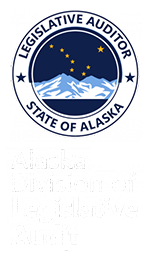| SUMMARY OF: | A Special Report on the Department of Transportation and Public Facilities, Alaska Marine Highway System, Vessel Maintenance and Repair Procurement. |
Purpose of the Report
In accordance with Title 24 of the Alaska Statutes and a special request by the Legislative Budget and Audit Committee, we conducted an audit of the vessel maintenance and repair procurements administered by the Alaska Marine Highway System (AMHS). Our objectives were:
- to evaluate AMHS’ compliance with the applicable state and federal procurement statutes and regulations, which includes, when appropriate, the application of the interport differential;
- to evaluate the current state statutes and regulations to assess whether their application results in fair and unbiased contract awards; and
- to identify prior and ongoing federal, state, and local government subsidies and incentives received by shipyards used by AMHS for vessel maintenance and repairs.
Report Conclusions
Our review found that AMHS adheres to state and federal procurement laws and regulations when contracting for vessel maintenance and repairs, including the correct application of the interport differential when appropriate. Currently, Alaska Statutes provide for the maximum use of in-state shipyards, and AMHS complies with this mandate by contracting with either the Ketchikan or Seward shipyard for overhaul projects. Overhauls are typically performed at the shipyard in the vessel’s base port whenever possible. This reduces the chance of extended disruption of ferry schedules due to the additional transportation time created by sending a ferry out-of-region for overhaul. AMHS also believes, not unreasonably, that this practice ensures the safety of the vessel and crew while avoiding the risk of additional costs for possible damages when transporting vessels from southeast Alaska to Seward during bad weather and rough seas.
As a longstanding matter of public policy, shipyards often receive government subsidies. Subsidies to shipyards are provided as incentives by local, state, or federal governments. Such incentives are designed to: (1) promote the industry; (2) entice an enterprise to move to, or stay in, a given community; or (3) in the case of federal government, assist in the interest of national security and defense. Subsidies may take the form of direct grants, low-interest loans, tax deferral, property tax exemption/reduction, lower utility rates, or acquisition of capital assets from the government entity at less than fair market value.
At the end of World War II, the United States had a vast complex of shipyards that were used to support its wartime program of naval and merchant ship construction. The complex included nine government-owned and operated shipyards and approximately 132 privately owned shipyards. The government invested over a billion dollars in this complex.
Since then, the U.S. government has had a number of subsidy programs, some of which still exist today.
In Ketchikan and Seward there are government-owned and privately operated shipyards. The State built the Ketchikan shipyard at a cost of $38 million. The Ketchikan Gateway Borough granted the shipyard’s operator property tax relief and cash incentives totaling $800,000 from calendar years 1999 through 2001. Additionally, Ketchikan Public Utilities charged the shipyard a lower industrial rate for electricity.
The federal government also awarded two grants for the Ketchikan shipyard. In 2001, the Federal Highway Administration (FHWA) provided funds to the Department of Transportation and Public Facilities for a $2.6 million shipyard improvement project. The U.S. Department of Commerce, Economic Development Administration awarded a $5 million grant, with a corresponding $5 million total match from both the borough and the State, for the purchase of a vertical lift.
Construction of Seward’s marine industrial complex, which includes the shipyard facilities, was also partially funded by the State. In 1981, the legislature appropriated $13.7 million to the City of Seward to construct the complex. Another $4 million was appropriated to Seward by the legislature in 1982 as a grant for the industrial park associated with the complex. In 1986, the legislature appropriated just over $1 million for cradle and rails, and in 2001 an additional $1 million was appropriated for portable work stations at the shipyard. (See Appendix D for further details)

